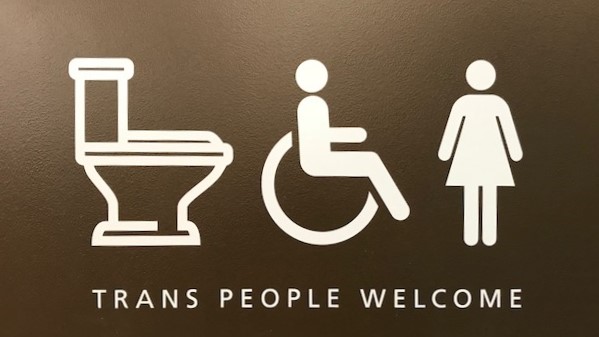In an anthropological linguistics course, our professor showed us a newspaper clipping referring to a “neighbour’s wife.” It’s the kind of language many people would glide over … until, perhaps, your professor pointed out that the neighbour’s wife could have been described as the neighbour without losing any meaning.
I used to tell that story with the caveat that the specific example was old even by the time I took the course – but I recently saw a news story using the same unnecessary “neighbour’s wife” construction. Hello 2018.
It’s an uncomfortable realization that we too often think of certain types of people as the default. But we are often not even aware of our own assumptions. Consider:
- My half-Chinese nephew was born during my university days and I suddenly realized how difficult it was to find children’s books and pictures that looked more like him and less like me.
- I’ve avoided events where photos suggest everyone else will be half my age.
- I’ve chosen yoga studios for having all shapes of people on their website.
- When I refer to “my boss” to strangers, those who use a pronoun in response invariably use “he.”
- If that psych professor had called out “doctor” evidence suggests most people would have thought of a man.
“What exactly is wrong with always referring to an imaginary doctor as “she” and an imaginary nurse as “he”? It’s just words and words aren’t important.” Dr Alice Smith, Consultant Neurologist
— manwhohasitall (@manwhohasitall) June 16, 2018
My point, and I do have one, is that considering who we’re targeting in our communications is important, but considering who we are excluding — and building in tactics to avoid unintentional exclusion — is equally so. If we don’t see ourselves explicitly reflected in our society, we tend not to feel implicitly included.
Our target audience should almost never be “everyone,” but unless we make an effort to show a representative sample of our target audience, we are likely playing into biases — ours and our audience’s.
If we don’t include free activities in our recommendations, we are not talking to people from lower socio-economic backgrounds. If our websites refer to a generic “he” and “she” throughout the copy, we are excluding those who don’t identify as either. If every name in our newsletter stories is a John Smith or Jane MacDonald, or our pictures never show someone with a disability just going about their lives, or if all couples are male/female or the same ethnicity, we likely aren’t talking to “everyone” in our target audience even if we think we are.
 I came across a job posting the other day that impressed me for its inclusiveness and inspired this post. The language encouraging people with disabilities to apply was the strongest I’ve seen – not surprising since the hiring organization is the International Paralympic Committee. But what did surprise me was the notation (f/m/x) after the position title in all their postings. Even in European job listings where specifying (m/f) is more common, I’d never seen that before.
I came across a job posting the other day that impressed me for its inclusiveness and inspired this post. The language encouraging people with disabilities to apply was the strongest I’ve seen – not surprising since the hiring organization is the International Paralympic Committee. But what did surprise me was the notation (f/m/x) after the position title in all their postings. Even in European job listings where specifying (m/f) is more common, I’d never seen that before.
Jobs should, by default, be open to all genders. But what a difference it makes to specify all genders, including people who have a history of being excluded from various aspects of society, are welcome to apply. One little x revealed more about a culture of inclusion than any sentence insisting “everyone” is welcome to apply. I think we should all take the time to consider how to bring all applicable variables into our equations.
Want to find out more about your own implicit associations? Check out the Project Implicit test from Harvard. For a more lighthearted look at gender bias, check out The Man Who Has it All’s parodic Twitter feed.


